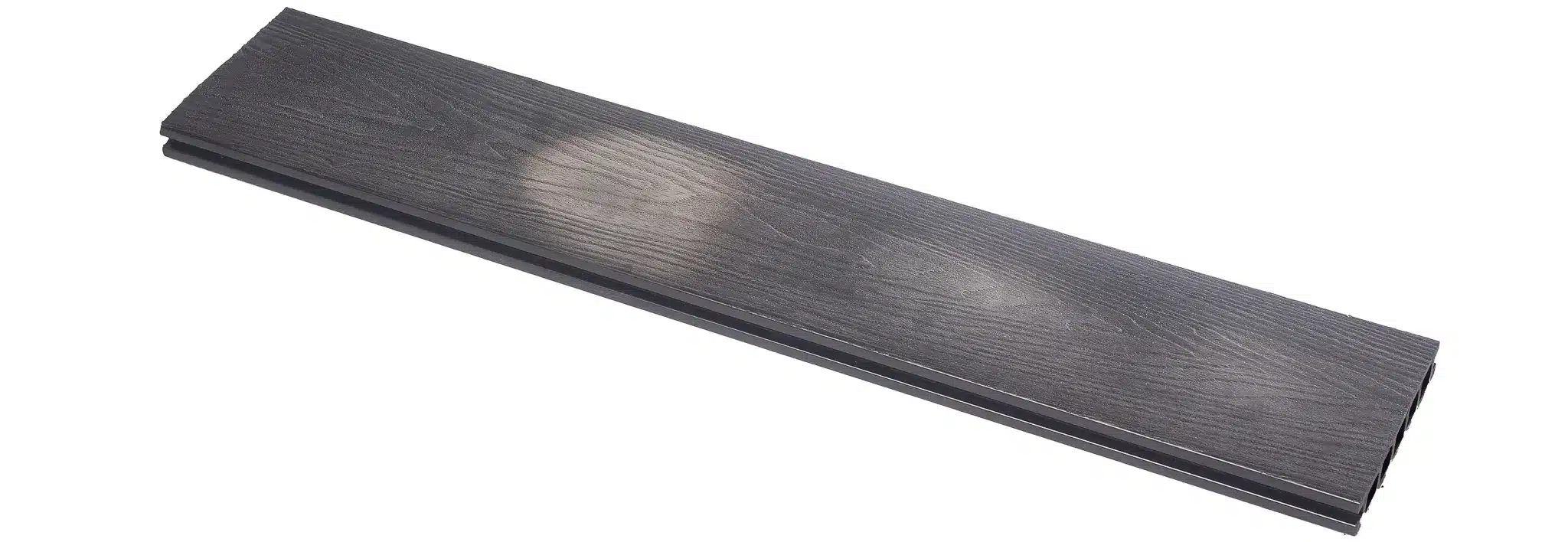Can You Clean Composite Decking With Bleach?
Snowfall during winter can make decking slippery. A slippery decking, in turn, can cause injury to an individual. You should remove the snow that piles up on your composite decking to prevent that from happening. Most people prefer covering their deck floor. However, Ice melt is used to remove ice on sidewalks and parking lots. Can you also put ice melt on composite decking?
What is Ice Melt?
Ice melt is a substance that you can use to remove ice. You can use ice melt to remove already formed ice on decking and sidewalks. Apart from that, you can also apply the ice melt on your decking before it starts to snow. The ice melt will prevent the build-up of ice.
Choose the Best Ice Melt for Composite Decking
There are many different kinds of ice melts you can buy. But not all types are suitable for applying to composite decking. You should always go for an ice melt that is not too harsh to avoid any decking damage, that could lead to expensive repairs.
Types of Ice Melt for Composite Decking
Calcium chloride ice melt, sodium chloride (rock salt) and magnesium chloride are three popular ice melt for decking, used by many customers worldwide. We personally recommend calcium chloride as it is a gentle ice melt that ensures you wont damage your deck or surrounding landscape including plants.
Calcium Chloride Ice Melt
Calcium chloride ice melt is suitable for composite decking as it will not cause any damage or discolouration to the materials surface. It is also one of the most effective kinds of ice melt compared to other types. Calcium chloride dissolves ice effectively and quickly. It works by forming a liquid brine when in contact with snow or ice. This brine lowers the water freezing point and causes ice to melt.
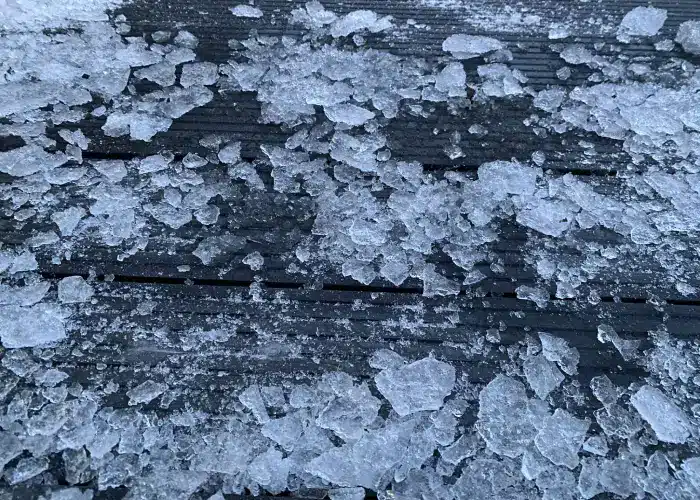
Sodium Chloride (Rock Salt)
Sodium Chloride is also known as rock salt and is also commonly used as ice melt by many customers annually. It is cheap to buy, making it a popular choice in winter. Rock Salt melts ice or snow by lowering the freezing point of water. When applied in the right proportion, rock salt cannot affect plants, do be careful as large amounts near plant and soil can cause damage, so please bare this in mind and carefully apply.
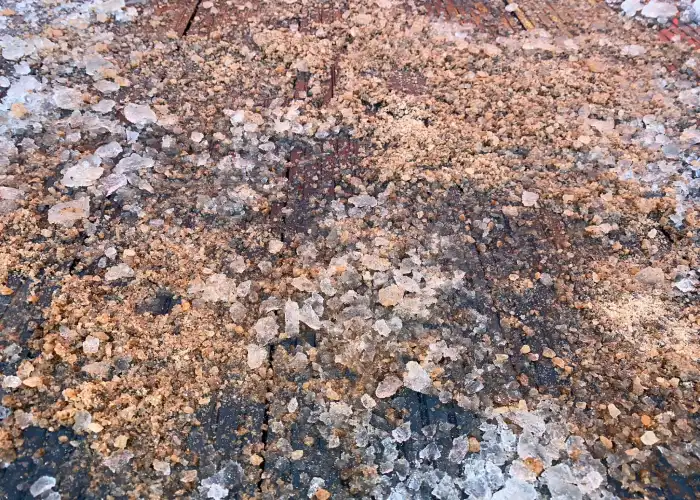
Magnesium Chloride
Similar to calcium chloride, magnesium chloride melts ice quickly by absorbing moisture. Magnesium chloride is the most environmentally friendly ice melt, however the amount applied must be paid close attention too, especially near plants and soil, high does near soil or plant can cause damage. Magnesium chloride is safer to use than sodium chlorine but attention must still be paid when applying or using near grass, soil or plants.
Can You Put Ice Melt on Composite Decking?
Yes, you can put ice melt on your composite decking. Calcium chloride ice melt is the best for wood-plastic composite.
Calcium chloride wont stain your decking and is also the safest choose if you have pants and soil near or surrounding your decking area. Magnesium chloride is the next best in our personal view but do be careful when appealing near plants and soil as it can cause damage. Wood decking can absorb calcium chloride ice melt. Unlike wood, capped composite can not absorb calcium chloride ice melt.
Rock salt ice melt can cause wood decking to crack by pulling moisture out of the wood causing cracks in rare causes, therefore caution and small amount must be used when applying to wooden decking. On the other hand, capped composite decking with its PE cap does not experience this same problem. You don’t need to worry that the rock salt ice melt will crack your wood-plastic decking.
You can also use rock salt on composite decking but use it moderately. Before laying ice melts on the deck, ensure it is not harsh and once the ice has melted clean your deck thoroughly. You should always test the rock salt before using it on the composite decking. One way to do this is by applying the ice melt to a small part of the decking. If the ice melt does not damage the decking, you can apply it.
Precautions to Take When Using Ice Melt in Composite Decking
Knowing that you can use ice melt on composite decking, you need to be careful. Below are some precautions to take.
1 Avoid Ice Melts with Traction Grit
Tractions are great for preventing slipping on ice, but you should not use them on composite decking as they can cause scratches to the deck’s surface. Avoid ice melts with traction grits like sand, sawdust and more. You should only use an ice melt that does not contain any traction grits.
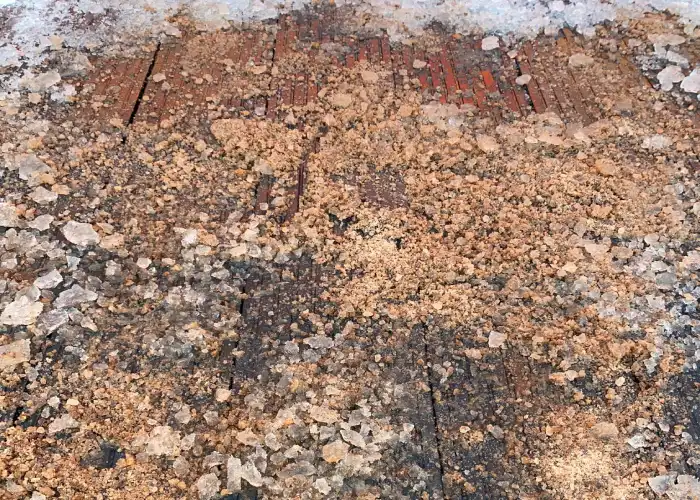
2 Avoid Ice Melts With Colourant
Ice with colourants can stain composite decking. You should not use it on your composite decking. If you want to apply an ice melt on your decking, choose a type that doesn’t contain colourants.
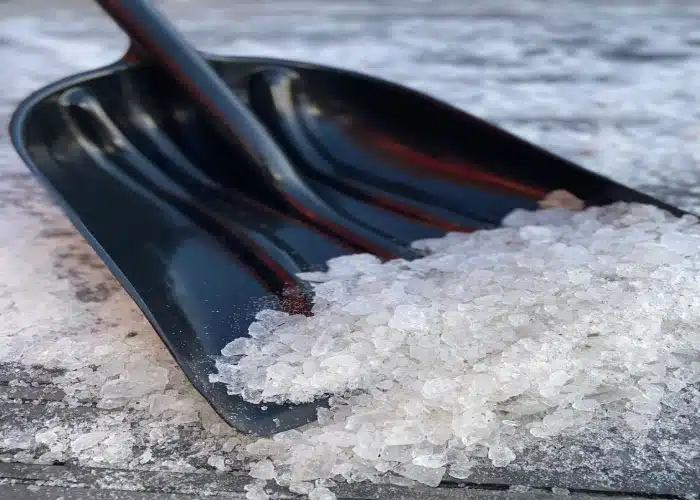
Conclusion
You can put ice melt on composite decking. Calcium chloride is suitable for composite decking. Additionally, avoid using ice melt with traction grits and colourants.
How to Remove Snow From Composite Decking



